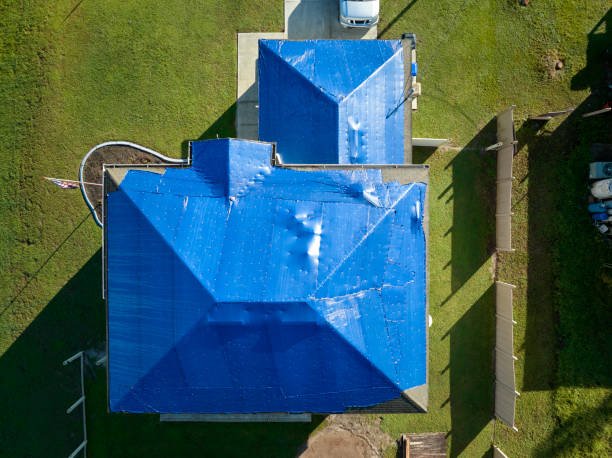Do you have a canopy that’s seen better days? Don’t worry; with the right techniques and materials, you can easily repair your canopy cover and restore it to its former glory. In this detailed guide, we’ll walk you through the entire process, from identifying the issue to applying the necessary fixes. Get ready to extend the lifespan of your canopy and enjoy its shade and protection for years to come.
Canopy Cover Damage
Before diving into the repair process, it’s crucial to identify the type of damage your canopy cover has sustained. Common issues include:
- Small holes or tears caused by sharp objects, wear and tear, or exposure to the elements
- Larger rips or missing sections due to severe weather, accidents, or improper handling
- Fading or discoloration from prolonged exposure to UV rays
- Mildew or mold growth due to moisture buildup
Identifying the specific issue will help you determine the appropriate repair method and materials needed.

Preparing for the Repair Process
Gather the necessary tools and materials:
- Scissors or a sharp knife
- Ruler or measuring tape
- Canopy repair tape or patch kit (matching the canopy material)
- Waterproof sealant or adhesive
- Cleaning supplies (mild soap, water, and a soft cloth)
- Protective gear (gloves, goggles, and a mask if working with adhesives or sealants)
Points to consider:
- Choose a well-ventilated area to work in, as some materials may have strong odors.
- Clean the canopy cover thoroughly to remove any dirt, debris, or mildew before attempting repairs.
- Ensure the canopy cover is completely dry before proceeding with the repair process.
Patching Small Holes and Tears
For minor holes or tears, patching is often the most straightforward and cost-effective solution.
Materials needed:
- Canopy repair tape or patch kit
- Scissors or a sharp knife
- Ruler or measuring tape
Step 1: Measure the size of the hole or tear, and cut a patch slightly larger than the damaged area.
Step 2: Clean the area around the damage, ensuring it’s free of dirt, debris, or loose fibers.
Step 3: Apply the adhesive side of the patch to the underside of the canopy cover, aligning it with the damaged area.
Step 4: Smooth the patch onto the canopy cover, applying firm pressure to ensure proper adhesion.
Step 5: If using a repair tape, carefully remove the backing and apply the tape over the patched area, smoothing it out to eliminate any air bubbles or wrinkles.

Replacing Larger Sections of the Canopy Cover
For more extensive damage, such as large rips or missing sections, you may need to replace a portion of the canopy cover.
Materials needed:
- Replacement canopy material (matching the existing cover)
- Scissors or a sharp knife
- Ruler or measuring tape
- Waterproof sealant or adhesive
- Clamps or weights
Step 1: Measure the damaged area and cut a replacement section from the new canopy material, allowing for a 2-3 inch overlap on all sides.
Step 2: Clean the area around the damage, ensuring it’s free of dirt, debris, or loose fibers.
Step 3: Apply a generous amount of waterproof sealant or adhesive to the underside of the canopy cover, around the damaged area.
Step 4: Carefully position the replacement section over the damaged area, ensuring proper alignment.
Step 5: Use clamps or weights to secure the replacement section in place and allow the adhesive or sealant to cure according to the manufacturer’s instructions.
Step 6: Once cured, trim any excess material from the edges, ensuring a neat and secure fit.
Reinforcing and Waterproofing
After repairing the canopy cover, it’s essential to reinforce the patched or replaced areas and waterproof the entire surface to ensure long-lasting protection.
Materials needed:
- Waterproof sealant or coating
- Paintbrush or roller
- Protective gear (gloves, goggles, and a mask)
Step 1: Clean the entire canopy cover, ensuring it’s free of dirt, debris, or loose fibers.
Step 2: Apply a waterproof sealant or coating over the repaired areas, following the manufacturer’s instructions for proper application and drying times.
Step 3: Once the repaired areas are sealed, apply a waterproof coating to the entire canopy cover, ensuring even coverage.
Step 4: Allow the sealant or coating to cure completely before using or storing the canopy.

Tips for Maintaining Your Repaired Canopy Cover
To ensure your repaired canopy cover remains in top condition, follow these maintenance tips:
- Avoid exposing the canopy to harsh chemicals, abrasive cleaners, or high-pressure washers, as these can damage the material and compromise the repairs.
- Store the canopy in a cool, dry place when not in use, and avoid folding or creasing the repaired areas.
- Inspect the canopy regularly for any new signs of wear or damage, and address them promptly to prevent further deterioration.
- Consider applying a UV-resistant coating or treatment to protect the canopy cover from fading or discoloration due to prolonged sun exposure.
FREQUENTLY ASKED QUESTIONS
Can I repair a canopy cover made of different materials, like polyester or vinyl?
Yes, the repair techniques described in this guide can be applied to various canopy cover materials, including polyester, vinyl, and canvas. However, it’s essential to use repair materials and adhesives specifically designed for the material of your canopy cover.
How long will the repaired canopy cover last?
The longevity of your repaired canopy cover depends on several factors, including the quality of the repair materials, the severity of the initial damage, and how well you maintain the repaired canopy. With proper care and maintenance, a well-repaired canopy cover can last for several seasons.
Can I repair a canopy cover with mold or mildew growth?
Yes, it’s possible to repair a canopy cover with mold or mildew growth, but you’ll need to thoroughly clean and disinfect the affected areas before attempting any repairs. Failure to do so may cause the mold or mildew to spread and compromise the repairs.
Can I repair a canopy cover with UV damage or fading?
While you can patch or replace damaged sections of a faded or UV-damaged canopy cover, the repaired areas may not match the color or appearance of the rest of the cover. In such cases, it may be better to consider replacing the entire canopy cover for a more consistent look.
Is it better to patch or replace a damaged canopy cover?
The decision to patch or replace a damaged canopy cover depends on the extent and severity of the damage. Small holes or tears can often be patched effectively, while larger rips or missing sections may require a full replacement for optimal performance and longevity.
Can I repair a canopy cover while it’s still attached to the frame?
It’s generally easier and safer to remove the canopy cover from the frame before attempting any repairs. This allows you to work on a flat surface and ensures proper access to all areas of the cover.
How do I choose the right repair materials for my canopy cover?
When selecting repair materials, it’s crucial to match them to the specific material of your canopy cover. Consult the manufacturer’s recommendations or seek advice from a professional to ensure you’re using compatible and effective repair products.
Can I repair a canopy cover myself, or should I seek professional help?
Many minor repairs, such as patching small holes or tears, can be performed by a handy DIYer with the right tools and materials. However, for more extensive damage or complex repairs, it may be advisable to seek professional assistance to ensure proper and long-lasting results.
Final Words
Repairing a damaged canopy cover is a cost-effective and eco-friendly solution that can extend the lifespan of your canopy and save you from the expense of a full replacement. By following the step-by-step instructions outlined in this guide, you can confidently tackle small and large repairs, ensuring your canopy remains a reliable source of shade and protection for years to come.


